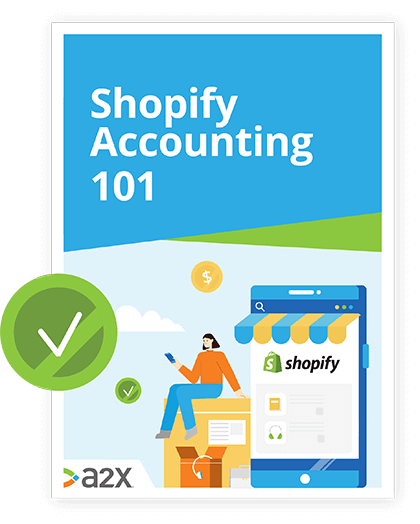![What Are The Best Shopify Products To Sell In 2023? [Guide]](/img/blog/small-best-shopify-products-to-sell-best-shopify-products-min.png)
What Are The Best Shopify Products To Sell In 2023? [Guide]
People shop via ecommerce for just about anything, so the list of things you could sell online is practically endless.
Where do you start when it comes to finding products that will be popular for your Shopify store?
In this guide, we aren’t going to just provide you a list of promising ideas. Whilst we will cover what has been performing well, we want to help you ask the right questions and perform insightful research so that you can make the best decisions for your business in the long-term.
From types of shoppers to their behavior and how you can reach them, we’ll go beyond what sells and touch on why it sells, so that as trends change, you can be ahead of the game.
In this article on the best Shopify products to sell in 2023:
Table of Contents
Learn how to manage your Shopify accounting the right way
If you want to scale up your Shopify business, you need reliable accounting. Discover the best tools, key tax information and how to ensure that your Shopify accounting is set up for success.
Download our free guide
Plus, if you’re new to Shopify or keen to learn about how it is helping sellers with new releases, upgrades and tech this year, check out our guide How to Sell on Shopify.
Ready to go? Let’s do it.
A Quick Overview of Shopify and its Customers
Before you jump right into choosing your products to sell on Shopify, let’s take a step back and look at the platform itself and how customers tend to interact with it.
What is Shopify?
Shopify is a platform that allows businesses to create their own ecommerce stores largely from scratch.
Most of Shopify’s store owners are based in the US with over 900,000 brands and counting, but its customers come from all over the world.
Unlike Amazon and eBay, Shopify is not a marketplace facilitator. It does not bring customers to the sellers, so it’s important for any Shopify seller to know how their customers find them and how to attract more.
Selling on Shopify is all on you.
Shopify customer behavior
Shopify generates customer reports for its business owners so that they can keep tabs on where their customers are coming from and how many are returners or first-timers.
Sellers can gauge which customers are counted as “loyal” or “at risk” and Shopify provides its metrics for determining this. These metrics allow sellers to tweak and adjust their approaches both across the board and for customers individually.
It’s also worth mentioning how prevalent mobile is and promises to remain, particularly for Shopify, with around 70% of orders and 80% of website traffic to Shopify coming via mobile devices. We know that mobile consumers spend a lot of time with apps, and the Shop app now has around 16 million+ users.
So your key customer behavior takeaway? That it can be measured from within the platform itself, so you’d be silly not to take notice. And in this day and age, optimizing for mobile use and expanding your offering across Shopify’s app network is a no-brainer.
Top Products To Sell On Shopify Right Now
So before we get to how to research your products, let’s take a peek at the things that have been selling well according to Shopify’s report.
These were correct at the time of publishing, but the report is updated regularly, so check it out for the latest information:
- Power tool accessories
- Dog toys
- Costume shoes
- Laptop batteries
- Shot glasses
- Slipcovers
- Wall plates and covers
- Baby shirts
- Curtain and drape rings
- Cabinet knobs and handles
- Watch accessories
- Tumblers
- Model train sets
- Signage
- Wedding dresses
- Table runners
- Motor vehicle parts
As you can see, that’s quite a range, which suggests that selling on Shopify is not about any one miracle product, but a combination of smart strategies.
What about selling digital products on Shopify?
You can sell a huge range of products via Shopify, including digital. These might include but are certainly not limited to:
- Graphic art
- Photography
- Music
- eBooks
- Online courses
- Digital templates
If digital is your thing, check out Shopify’s advice post on selling these and always keep in mind the top selling strategy for any brand: Find your niche.
What can’t you sell on Shopify?
Selling on Shopify does promise more freedom than marketplace facilitators, but you’re not off totally scot-free.
Shopify does have some prohibited product regulations in place to protect both its buyers and its sellers - so don’t start on the wrong foot.
This is just a handful of products and services you cannot sell via your Shopify store:
- Financial and professional services
- Tobacco, e-cigarettes, and e-liquid
- Weapons, munitions, and fireworks
- Multi-level marketing services
- Sale of followers, likes, and views on social media
Then there are regulated products which are not prohibited but tightly controlled. CBD ranges for example, can be sold subject to certain rules. Alcohol is the same with its own set of sale requirements you can find here.
If you are a new seller, it may be best to steer clear of anything a little cloudy at the beginning, while you find your feet. Putting all your Shopify eggs in one unsteady basket when you’re still learning is not a recipe for success.
Researching Products To Sell On Shopify
Really it’s all about up-to-date research.
You need to understand what the demand is before you can identify the gap in (or growth potential for) the supply.
You know what to avoid, what’s selling well and how your customers are shopping so next up, let’s check out the tools for researching the smartest products to sell on Shopify this year.
Product research tools
Customers talk - they share, recommend and review. All the information you need about them and their preferences is at your fingertips.
For insights around what’s performing and what’s not, check out some of these tools:
-
For researching trends:
- TrendWatching: Both free and paid services are available.
- Trend Hunter: Customizable as well as general trend reports.
-
For insights from Google:
- Google Trends: Search trends by location straight from Google.
-
Social media ideas:
- Instagram hashtags: By finding trending hashtags you can see how many people are posting about a given topic and what those posts are.
-
Via wholesale partners:
- Alibaba (best-selling products): Check out what sells well by potential dropship partners or to get a feel for the ecommerce industry in general. Look at reviews, how listings are designed and ads phrased - everything you need to know is already there.
-
Other marketplaces:
-
Amazon (best-selling products): As with Alibaba, looking at how Amazon lists and markets its products as well as which are popular is useful for any new seller. Those winning the buy box in particular will have better SEO and ratings.
-
eBay (best-selling products): Useful again for products and for how to sell them.
(Bear in mind that Shopify customers may not be looking for the same kinds of products and selling formats as eBay customers, so use as a guide only).
-
Tips for finding products to sell on Shopify
Here are some of our top tips of things to keep in mind when doing your product research and making the final decisions:
- Pain points: What problem can you solve for customers? Does something else already do this on the market, how successful is that competitor?
- Niches: Find your niche and target your marketing strategy accordingly.
- Pricing: Another area to research. Be smart with your pricing - you want to make a profit but you also want customers to feel fairly compensated too. Plus, if you sell higher price-point items, your customers might want more interaction with you beforehand. Are you prepared for that?
- Additional accessories: Upselling and cross-selling opportunities are a great way to increase your sales, can you sell related items in addition to your main products?
Nurturing Your Seeds and Growing Your Store
Once you’ve chosen your products and planted the seed for your store, you need to put some time (and potentially spend) behind advertising. Remember, Shopify doesn’t bring customers to you like some of the other platforms do.
Here are some ways to advertise your Shopify store:
-
Facebook and Instagram advertising:
-
Blogging and SEO:
- Blog on your store for organic traffic
- Feature with and partner other bloggers for reach and awareness
- Optimize your store for Google with SEO best practice
-
Expand into multimedia:
- Consider starting a YouTube channel for your biz
And many more.
By utilizing these means at your disposal, you can customize exactly how customers see and interact with your brand online.
You can control its messaging, identity and positioning so that all those coming to your website understand who you are, what you do, and why you’re the best at it.
Wrapping It Up
Whilst ecommerce and Shopify are stronger than ever this year, success in the industry depends upon agility and smart decision-making.
You need to be comfortable with change.
Understand your platform, your customer and your sales channels before anything else. Once you have a handle on these, it should be easy to filter through the product options you have out there.
Do you have an area of expertise? It’s always easier to write about and sell what you know. Utilize all the tools that Shopify gives you (like the blog component) - after all, it wouldn’t have been built in if the experts didn’t see its value.
Good luck!
Whatever You Sell, Keep Track with A2X for Shopify
Selling online encompasses enough without struggling with number crunching on top. How can you know whether your products are selling profitably if you don’t keep track?
A2X captures all the data relevant to each of your Shopify bank deposits and itemizes it for you. From sales tax collected to shipping costs included, fees deducted and reimbursements received, A2X does the leg work for you. It also splits any Shopify statements that span different months and organizes your books via the accrual method, giving you greater insight into the performance of your business from month to month.
Integrate A2X with your Shopify store and accounting software for automatic, accurate books.
Also on the blog
Learn how to manage your Shopify accounting the right way
If you want to scale up your Shopify business, you need reliable accounting. Discover the best tools, key tax information and how to ensure that your Shopify accounting is set up for success.
Download our free guide


